And the “upward trend” of accessibility across the industry.
I was one of a handful of people attending, some with disabilities and some without.
With the gear before us all, we prodded and poked, we customised, we compared our setups.

And we were able to play a number of games ranging in complexity.
Sony recognises that disabilities are different for everyone and the Access isn’t a universal solution.
What works for one player may not work for another with the same disability.

But that’s why the Access is so reconfigurable, and Sony has carefully considered so many options.
Even the packaging is accessible: evenly weighted and opened with one hand.
So how do you design an accessibility controller with so many variables?
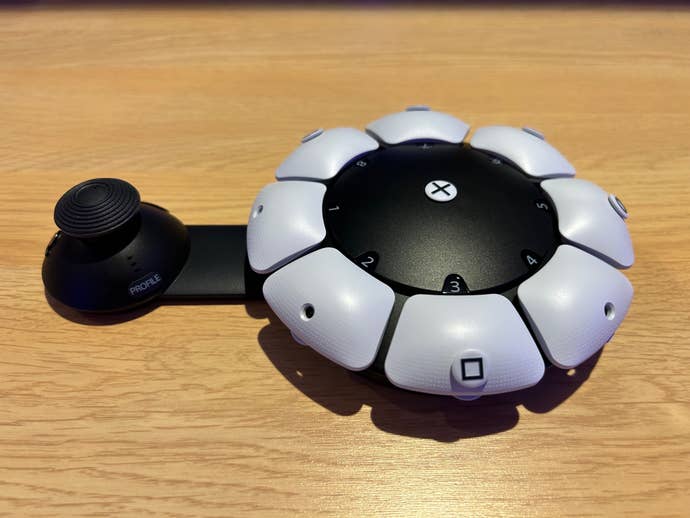
The Access is surprisingly small and compact.
There are multiple button types - round, flat, curved - and four expansion ports for third-party options.
There’s a toggle mode to hold down buttons, a bit like a caps lock.
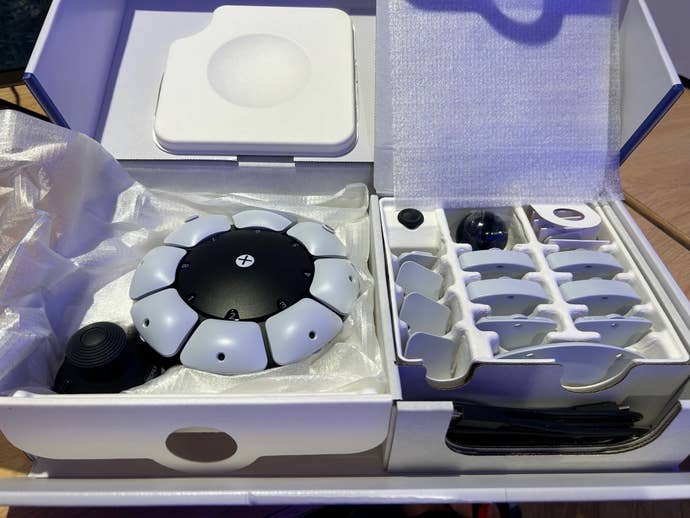
Indeed, the whole controller was somewhat inspired by mechanical keyboards, both for tactileness and customisation.
I asked about PC compatibility but Sony isn’t ready to discuss this yet.
The Access has nine buttons, plus the stick and a click press.
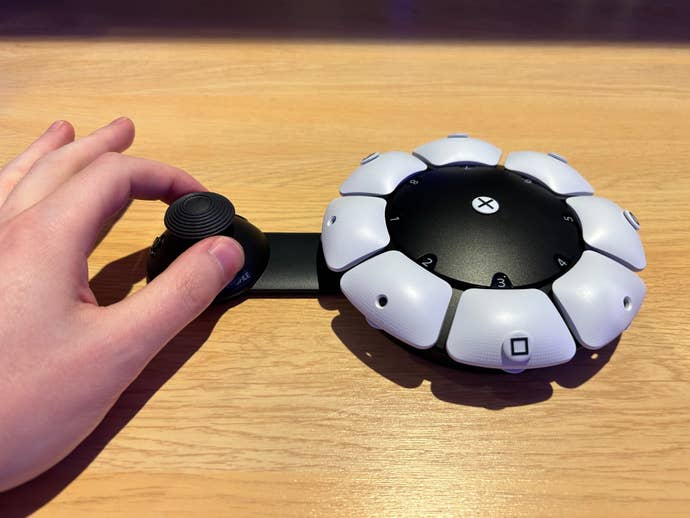
The DualSense has 18 inputs.
There’s an element of trial-and-error to finding the right set up for a game.
Sony itself suggests a one to two week immersion period.

But by the end of the session, I could competently play Ragnarok with an entirely new setup.
And its clicky buttons are definitely satisfying to use; playingStreet Fighter 6was almost like using an arcade stick.
This setup, though, was in tandem with in-game accessibility options.
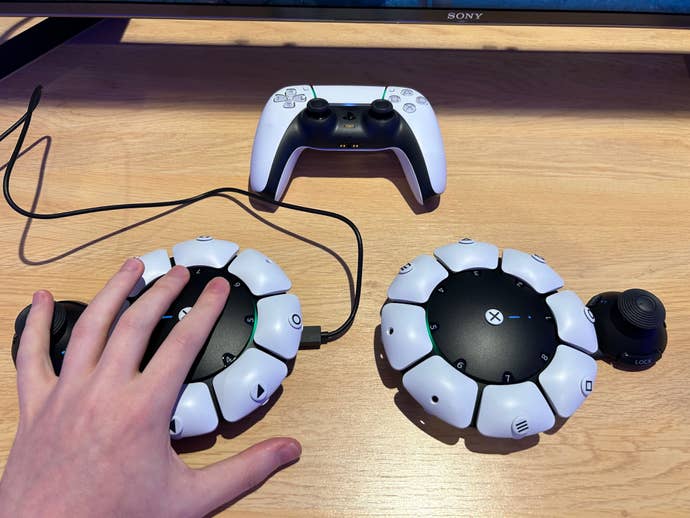
To find out more, I spoke with Alvin Daniel, senior technical program manager at PlayStation.
You mentioned earlier that work started in 2018.
What was the main driver behind it?
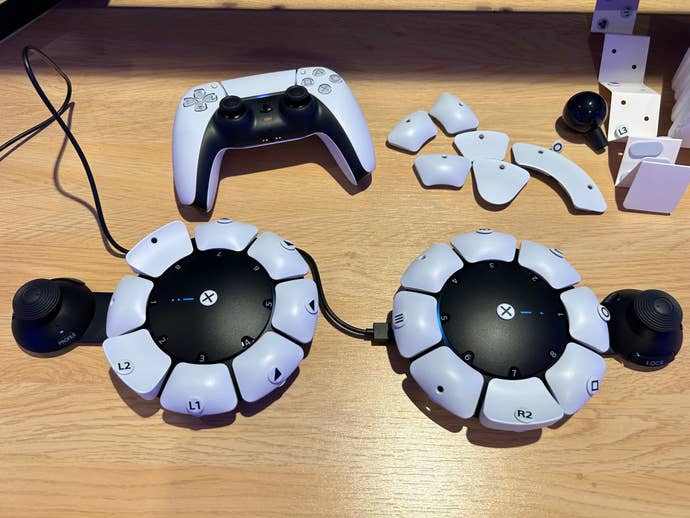
What was the starting point?
Then there’s the console and with each system software update we added new accessibility features.
And so that’s what the Access controller is: investing in addressing those specific challenges.
What did the testing process look like?
How would you get on if this was your controller?
Ultimately, we picked a very radical design.
We really wanted to do deep ethnographic studies and ship units into players' homes.
At what point was the design finalised?
There were tonnes of revisions.
We called it from mild to wild.
This was too mild and not up to what we wanted to do at PlayStation.
And then there were very wild designs, which effectively took the controller and cut it in half.
Now you’ve got a split controller, which ultimately turned to this design.
Even this design, there were square shapes, there were circular shapes.
We settled on a circular shape because there are more options and there’s no preferred orientation.
What are the buttons?
What goes in the kit?
How big are they?
What shapes are they?
It’s completely black and white, which matches the DualSense design.
Was there discussion about colour coordination for people with visual impairments?
We started with black and white, classic PlayStation colours.
As far as low vision is concerned, the tags have tactility on them.
So there is some element of feel.
The kit comes in different shapes and sizes.
To that extent, it’s customizable.
Colours: not yet.
If players want to use haptics or the touchpad, they still need the DualSense right?
Gyro is a good example.
So we had a very deliberate design intent to not include known problematic inputs.
A lot of accessibility controllers can be incredibly expensive.
How important was cost in coming up with a design?
And how did you ensure that this is an accessible piece of kit?
You’re right to make that observation and it’s something we noticed ourselves.
When we were doing a catalogue of what exists on the market, there was something called Accessibility Tax.
So that automatically jacks up the price of something that is ultimately very simple.
We make no statement or judgement about what you oughta game for longer and more comfortably.
And we found that almost everyone was using one profile.
It was super surprising.
No matter what game, this is what they stuck with, their core foundation.
If they need to make a change, they ended up overwriting just that one profile.
Ultimately, we think it’s a better experience if players discover it on their own.
I think what may end up happening is we curate good examples or spotlight good examples of setups.
Are there any particular features you are most proud of?
Or any features you weren’t able to include that you wish you could have?
The button cap system is super cool.
We had an engineer who was into mechanical keyboards and this was his idea.
I don’t think we’ve seen a mass market controller with this level of physical customisability.
Another element I’m really proud of, there’s the PS button here.
We quickly identified this as a single point of failure.
If you’ve got the option to’t easily press that button, your accessibility controller is dead.
you’re free to’t wake up the console.
So I was like, we’ve got to make the PS button programmable.
And it got “no we can’t, it’s a special button, it’s branded”.
We think what we have here in the box on day one is solid.
We’ve done a tonne of playtesting to evidence that.
After five years, it’s right to put this out and get community feedback.
What’s been the reaction to the Access controller from PlayStation Studios?
How do you engage with other studios?
We leave it to the studios to say what’s best for the community.
So the existence of this thing might actually spark a conversation of inclusive game design.
Has working on the Access controller caused Sony to look afresh at other accessibility options?
Insomniac, to give a concrete example, informed some of the features that exist in the Access controller.
Other elements like the packaging, this is accessible packaging, this is a first for PlayStation as well.
What’s your take on the state of accessibility in the industry in general at the moment?
What’s the next frontier that needs to be tackled?
I would say it’s an upward trend.
It seems like every week, industry-wide, there’s a new title that drops that has accessibility options.
And if it doesn’t have accessibility options, people panic and there are complaints.
It’s definitely in the mind of game developers.
Where I think there are new challenge areas, I actually think VR might be one.
On the one hand, VR could be an amazing experience for someone with a disability.
So there’s that amazing possibility.
And that’s problematic.
VR in general is also very young, very new, evolving constantly.
So I think accessibility in VR could be the next frontier.
Do you feel like we should have some sort of industry standard for accessibility in terms of options?
Obviously, it’s hard to be holistic, but perhaps minimum requirements?
I don’t know about minimum requirements and that gets into interesting design philosophy.
So we don’t make any statement about the games that are published on our platform.
I think overall, the trends are changing.
That’s a good thing.